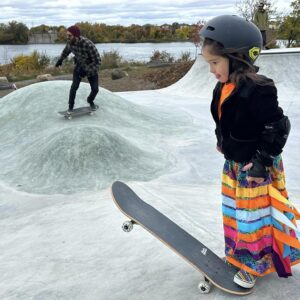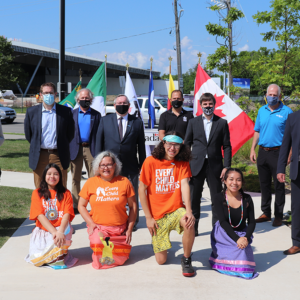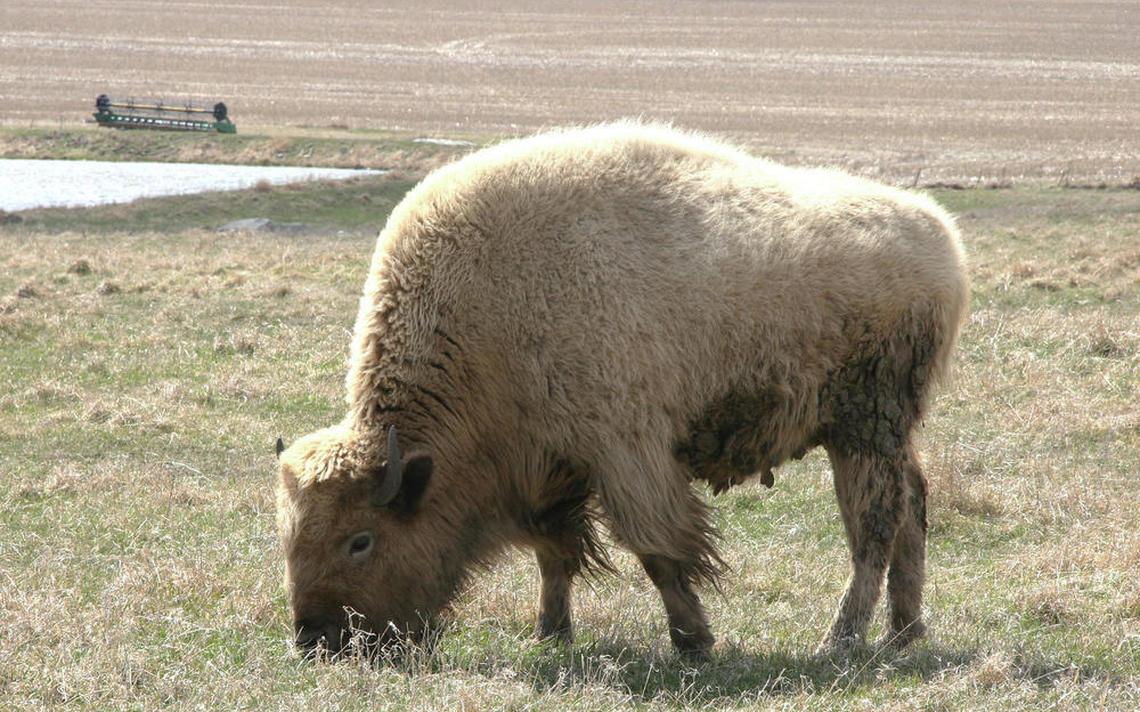
As early as 2007, the Onondaga Nation began understanding the repercussions of hydrofracking, a method of extracting methane gas from deep shale formations and warned allies about the risks of the industry.
In 2009, the Haudenosaunee issued a statement which called on New York State to ban the permitting of high volume hydraulic fracturing and encouraged allies to live up to our agreements to protect shared resources.
Since then, New Yorkers Against Fracking was formed, now consisting of over 250 grassroots organizations.
The anti-fracking movement is made up of a vast network of concerned citizens who work with local communities to ban fracking in their municipalities, involve the public in the environmental regulatory process, and pressure all of our elected representatives to keep New York safe from industrial pollution.
On Saturday, October 26th, Haudenosaunee representatives, community members, and students from Syracuse University, SUNY Environmental Science and Forestry, and SUNY Cortland, came together for a panel discussion about the indigenous perspective on hydrofracking and the movement for a ban in New York State. The audience was encouraged by the panel to not only learn more about the indigenous worldview but to get involved in organizing their own communities to ban hydrofracking.
On Wednesday, October 30, over 300 people traveled to Albany, the Capital of New York State, for a rally and to provide comments to New York State’s Department of Environmental Conservation at the only hearing for new regulations on Liquid Natural Gas facilities.
There were two public information meetings, one in Syracuse on October 16th and one that preceded the hearing on October 30th. During all three meetings, anti-frackers packed the room with only a few industry representatives in attendance.
At the hearing in Albany, Tamra Cook, member of the Mohawk Nation, spoke of the prophecy of the Seventh Generation, quoting that “the Onkwehonwe would see the day when birds would fall from the sky, the fish would die in the water, and man would grow ashamed of the way that he had treated his mother and provider, the Earth.”
The crowd was still and attentive, gasping throughout Cook’s speech, particularly when she stated “after seven generations of living in close contact with the Europeans, the Onkwehonwe would rise up and demand that their rights and stewardship over the Earth be respected and restored.”
Since the rise of the Idle No More movement and the reach of the Two Row Wampum Renewal Campaign, resource extraction, particularly tar sands and hydrofracking have been dominant issues addressed by environmental advocates throughout what is now known as the United States and Canada.
Both governments have failed to address and consult with Native Nations about extraction of resources throughout Haudenosaunee and other Native territory on Turtle Island.
The failure of these governments to treat Haudenosaunee Nations as sovereign nations is a violation of the UN Declaration of Indigenous Rights and various treaties to which the Canadian and the United States Government are bound to.
Neighbors of the Onondaga Nation has worked in solidarity with the Onondaga Nation for over a decade to support their initiatives and educate the people of Central New York.
The Two Row Wampum Renewal Campaign, an expansion of that work, is concluding a yearlong campaign to educate people throughout the North-East about the Two Row Wampum agreement and the Onondaga Nation’s Land Rights Action which the United State’s Supreme Court recently refused to consider.
The Two Row Wampum Renewal Campaign calls upon New Yorker’s to be good allies by learning the accurate history of relations between settlers and Haudenosaunee people and abiding by the Two Row Wampum; to live side by side as Onkwehonwe and settler people in peace and friendship for the rest of time. The Two Row is being interpreted as means to build unity in making sure that the land isn’t damaged by hydrofracking.
In Onondaga territory, the alliance between Onondaga Nation and citizens of New York State has developed from a long history of allyship. Historically, suffragettes such as Matilda Joslyn Gage and Susan B. Anthony built friendships with Haudenosaunee women that informed the women’s rights movement.
In recent years, the Onondaga Nation has worked with residents of Syracuse’s Southside to replace plans for new sewage treatment plants with a broad green infrastructure plan.
As a result of the work of Neighbors of the Onondaga Nation, the Two Row Campaign and Idle No More, non-natives are becoming more educated about the Onkwehonwe worldview. Allies are acting upon the calling to recognize our collective responsibility to take care of the land in Haudenosaunee territory and beyond.
Joanne Cipolla-Dennis, resident of Dryden, a town that is now being sued by Norse Energy for banning fracking, reaffirmed that banning fracking and working with our communities is essential, but the “indigenous perspective that taking care of the land we use is only borrowed from coming generations, is inspiration to keep fighting.”
Emily Bishop is from Syracuse, NY and works as a Regional Organizer for New Yorkers Against Fracking. She is also a steering committee member of the Two Row Wampum Renewal Campaign. Feel free to contact her at Emily@nyagainstfracking.org








Comments are closed.